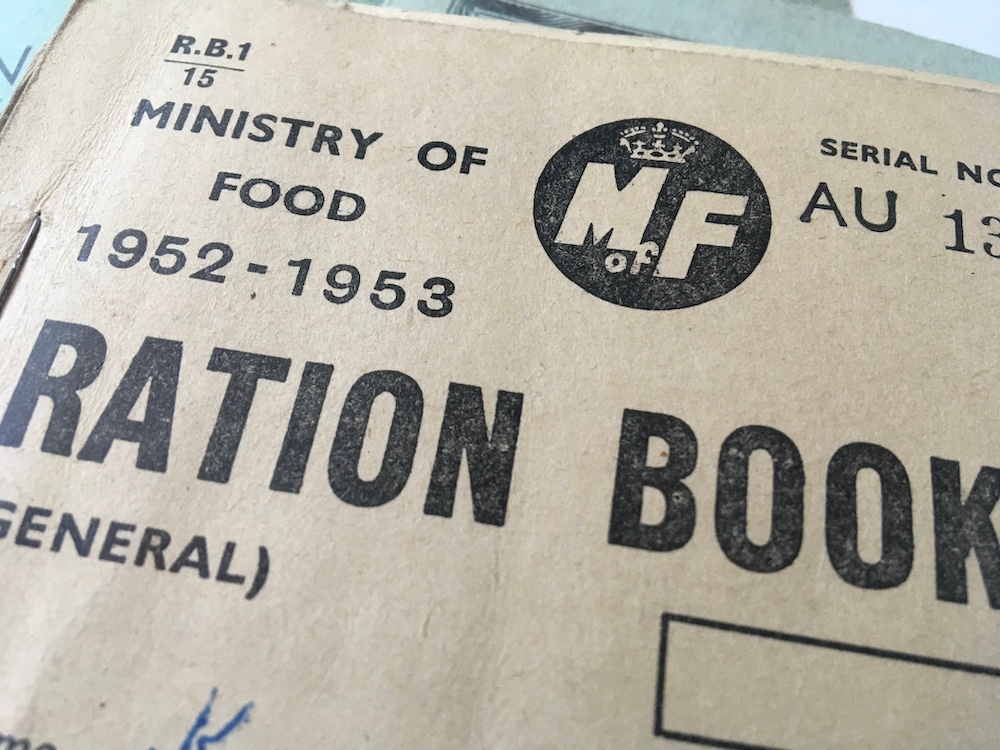
We all commemorated both VE Day and VJ day. Older family members told me that for them the most significant was VE as they could go about their daily lives without the fear of being killed by enemy bombing.
Black-out curtains came down and streetlights came on. Trams and buses were lit. Those families who had sons serving in the forces in Europe were relieved that there would be no further fighting.
But for those who had family members and loved ones serving in the forces in the Middle and Far East, although they had relief on VJ Day that the fighting had stopped, most did not see their loved ones for a further two years not only because of further ‘military engagements’ but also the lack of transport to bring them home.
Life at home in the UK continued to be a struggle. In 1946/47 the UK suffered the coldest winter with the most snow on record lasting until June! Almost everyone relied on coal fires for heating and some even for cooking and there was an extreme shortage of coal caused by the snow stopping deliveries.
Shortage of food supplies meant that wartime rationing had to be continued until 1953.
Eventually, even bread was put on the ration in 1946 and lasted for two years. I grew up during postwar rationing and I remember ‘National’ bread which had been introduced at the beginning of the war. The sale of white bread was forbidden. National bread was made from whole wheat with only 15% strong white flour. It was very nutritious but post-war it was not the lovely golden brown colour of today’s wholewheat and granary breads. I recall it being rather grey in colour and unappealing. With the post-war shortage of wheat, oats and potato flour were added to it.
I remember the excitement when, for the first time since the war, it was reported that our local baker was going to sell Hot Cross Buns to be made with white flour on a forthcoming Good Friday. I can remember the disappointment I felt when my mother came home with some. One could count on one hand the number of currants in them and nor were they sweet!
In 1949, sweets and chocolate came off the ration and I have a very early memory of toddling along with my mother to our local sweet shop. The shop had been stripped bare by customers buying up the sweets. All that was available was a huge job lot of black and white sweets which tasted like a soft liquorice toffee and we were grateful to be able to buy a bag. The Government quickly put sweets back on the ration, where they remained until 1953.
We usually had boring porridge for breakfast, which was sometimes enlivened by a small dollop of golden syrup. Although this was now off the ration after 1953, it had disappeared from the shops. It was possible that it had suffered the same fate of sweets, whereby every available tin had been snapped up.
I grew up in the Kirkstall area of Leeds, not in the populous village of Kirkstall but rather a mile away from it to the west of the magnificent Abbey in an estate aptly named ‘Vesper Gate’ at the side of the Abbey’s so-called west gate. I was determined to walk to Kirkstall to find a tin of syrup to buy.
I visited every shop in Kirkstall of which, pre-supermarket days, there were then at least a dozen, including a Co-op. None had any syrup until I reached the last one, commonly called a ‘house shop’ – a small terraced house where a limited number of goods were sold from the living room. There, on a shelf, was a single tin of Lyons golden syrup. I joyfully bought it and almost skipped that mile through the Abbey park to home.
This post was written by Hon Alderwoman Elizabeth Nash
Photo: Shutterstock
We encourage anyone living or working in South Leeds to use this website to tell their news. You can either use the Create an article for South Leeds Life page, or email us at: info@southleedslife.com
While you’re here, can we ask a favour?
South Leeds Life is published by a not-for-profit social enterprise. We keep our costs as low as possible but we’ve been hit by increases in the print costs for our monthly newspaper which have doubled in the last two years.
Could you help support local community news by making a one off donation, or even better taking out a supporters subscription?
Donate here, or sign up for a subscription at bit.ly/SLLsubscribe


